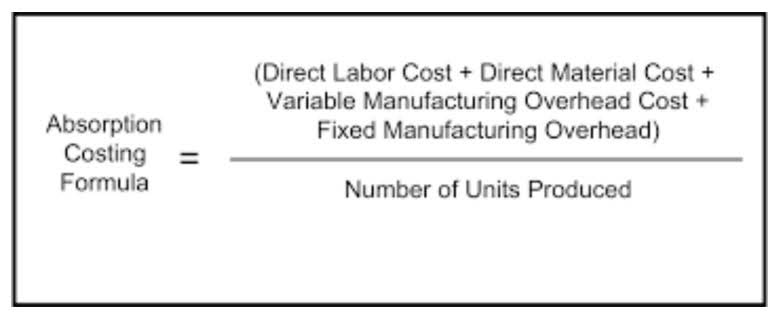
Overhead is then applied by multiplying the pre-determined overhead rate by the actual driver units. Any difference between applied overhead and the amount of overhead actually incurred is called over- or under-applied overhead. Predetermined overhead is an estimated rate used by the business to absorb overheads in the product cost, and it’s calculated by dividing overheads by the budgeted level of activity. Both figures are estimated and need to be estimated at the start of the project/period. Of Budgeting for Nonprofits course, management also has to price the product to cover the direct costs involved in the production, including direct labor, electricity, and raw materials.
- As a result, management would likely view labor hours as the activity base when applying overhead costs.
- Different methods are used to apply predetermined overhead rates based on the chosen cost driver.
- During that same month, the company logs 30,000 machine hours to produce their goods.
- The most common types of activity used to calculate a POHR are direct labor hours, machine hours, and units produced.
Applications of Predetermined Overhead Rates
Finally, as discussed above, some businesses may calculate their predetermined overhead rates based on historical information. However, these estimates may produce inaccurate results in volatile businesses where historical information cannot be used as a basis to estimate future data. Since predetermined overhead rates are used in budgets, they can also act as a monitoring and controlling tool for businesses. When monitoring and controlling overheads, businesses need some standard, to compare actual overheads with, to understand whether the budget is being properly followed.

Overhead Cost Allocation
A large company with a corporate office, a benefits department, and a human resources division will have a higher overhead rate than a company that’s far smaller and with fewer indirect costs. Finally, if the business uses material costs as the activity base and the estimated material costs for the year is 160,000 then the predetermined manufacturing overhead rate is calculated as follows. If a job in work in process has recorded actual labor costs of 6,000 for the accounting period then the predetermined overhead applied to the job is calculated as follows. Larger organizations may employ a different predetermined overhead rate in each production department, which tends to improve the accuracy of overhead application by employing a higher level of precision. However, the use of multiple predetermined overhead rates also increases the amount of required accounting labor.
Create a Lookup Table in Excel: A Step-by-Step Guide to Simplifying Data Analysis
Not a whole lot compared to other business models (which is probably why a lot of people choose to start these sorts of businesses!). Anytime you can make the future less uncertain, you’ll be more successful in your business. Learn about emerging trends and how staffing agencies can help you secure top accounting jobs of the future.
- In a company, the management wants to calculate the predetermined overhead to set aside some amount for the allocation of a cost unit.
- If a job in work in process has recorded actual machine hours of 140 for the accounting period then the predetermined overhead applied to the job is calculated as follows.
- When monitoring and controlling overheads, businesses need some standard, to compare actual overheads with, to understand whether the budget is being properly followed.
- The plant-wide rate method allocates overhead costs to all production departments based on a single predetermined overhead rate.
- As previously mentioned, the predetermined overhead rate is a way of estimating the costs that will be incurred throughout the manufacturing process.

This allocation process depends on the use of a cost driver, which drives the production activity’s cost. Examples can include labor hours incurred, labor costs paid, amounts of materials used in production, units produced, or any other activity that has a cause-and-effect relationship with incurred costs. Therefore, the one with the lower shall be awarded the auction winner since this project would involve more overheads. Hence, this predetermined overhead rate of 66.47 shall be applied to the pricing of the new product VXM. The elimination of difference between applied overhead and actual overhead is known as “disposition of over or under-applied overhead”. Hence, preliminary, company A could be the winner of the auction even though the labor hour used by company B is less, and units produced more only because its overhead rate is more than that of company A.
What is the formula for overhead in cost accounting?
- This information can help you make decisions about where to cut costs or how to allocate your resources more efficiently.
- The predetermined overhead rate computed above is known as single or plant-wide overhead rate which is mostly used by small companies.
- When the $700,000 of overhead applied is divided by the estimated production of 140,000 units of the Solo product, the estimated overhead per product for the Solo product is $5.00 per unit.
- In these situations, a direct cost (labor) has been replaced by an overhead cost (e.g., depreciation on equipment).
- In the absence of predetermined overhead rates, the business cannot compare actual expenses with any standard and, thus, cannot evaluate its actual performance.
For example, Figure 4.18 shows the monthly costs, the annual actual cost, and the estimated overhead for Dinosaur Vinyl for the year. Predetermined overhead rates are crucial for break-even analysis, allowing businesses to determine the level of sales needed to cover fixed and variable predetermined overhead rate costs. POHRs are typically used in businesses that have a high volume of production or sales, and where the overhead costs are relatively stable. They can also be used in businesses that have a variety of products or services, each with different overhead costs.

The differences between the actual overhead and the estimated predetermined overhead are set and adjusted at every year-end. We’ll outline the basic formulas used to calculate different types of overhead rates and provide overhead cost examples. unearned revenue Therefore, this predetermined overhead rate of 250 is used in the pricing of the new product.
